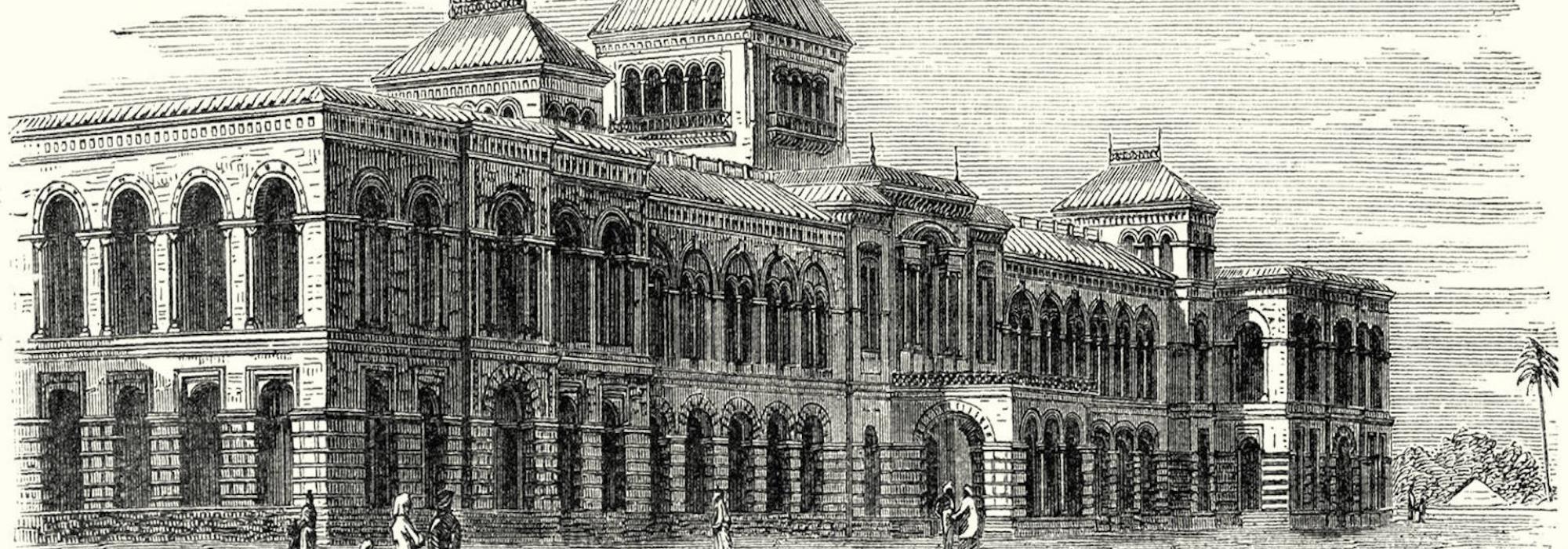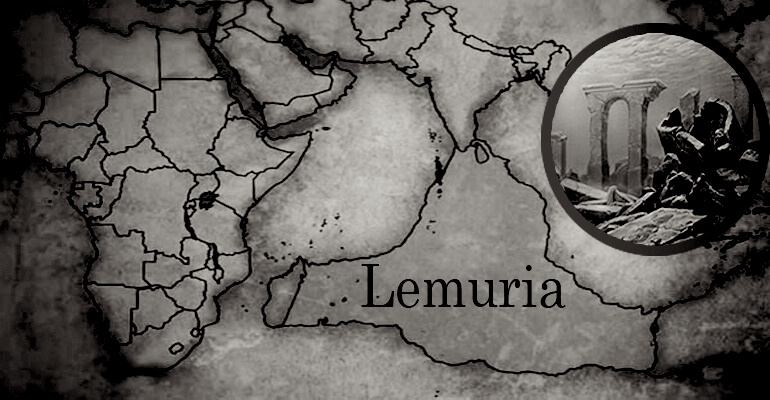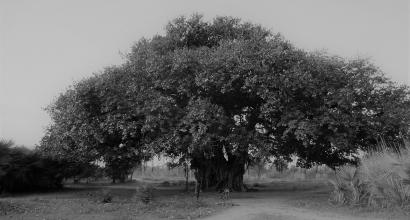Note: This essay and the ones that follow it are translated adaptations from the corpus of writings on the Dravidian movement authored by the late Dr. B G L Swamy. These essays are not literal translations.
To understand the Dravidianists of today, it is absolutely essential to understand the history and mythology of the ancient Tamil country.
According to this history and mythology, in really really really ancient times (nobody has told us how ancient), the eastern, western and southern parts of today’s Kanyakumari were attached to a really really really vast tract of land known as Lemuria or Kumari Nadu or Kumari Kandam. This really really really vast tract of land was subsequently submerged in the sea. The Tamils who survived this catastrophe migrated northwards.
And then in a short period, these Tamils migrated further northwards and occupied all of Bharata, and also made as their home today’s Pakistan and Afghanistan. The language they spoke in those days has today transformed into what is known as Brahui.
Today’s Dravidianists claim that because the Aryans invaded from outside, the ancient Tamils were exterminated from the northern parts of India, and also that because the invasion was unsuccessful south of the Vindhyas, the Tamils lived in peace and prosperity in these areas.
Unshakeable Faith in Mythology as History
The Dravidianists repose enormous and unshakeable faith in this mythology. Most of them continue to savour the Lemuria Theory. Because the first person to propound this theory was a Dravidianist himself, this theory acquired additional resplendence.
Nakkeerar who wrote a commentary on the Ahapporul or Kalaviyal, a compendium containing sixty aphorisms, has described in detail the ups and downs faced by the ancient Tamil country. The Ahapporul is said to be authored by Lord Shiva (Iraiyanaar) himself. (However, A.V. Subrahmanya Iyer in The Story of Tamil Research [1959] argues that the commentary was not written by Nakkeerar but by an unknown author.)
In any case, there’s no unanimity regarding this commentator’s dating. Traditional Tamil scholars assign his date to the 8th Century CE while scholars armed with graduate degrees place him in the 13th Century CE. But because this sort of internal quarrel harms the larger cause of the Dravidianists, a sort of compromise was reached between these two warring groups: they placed the commentary somewhere in the 10th and 11th Century CE.
But are there any historical proofs that show that the aforementioned really really really vast tract of land was submerged in the sea? The average Dravidianist typically does not anticipate such a question. And in case he has the patience and wherewithal to actually answer it, the stock reply will be on these lines: “Why the doubt? Our Kalittogai and Silappadikkaram (discussed later in this series) clearly mention that the land of the Pandyas was submerged in the sea. Why! The Bible itself contains instances of the Great Flood, sir!” In case they still don’t have the patience or the wherewithal, one might receive the following answer: “Why do you ask these mischievous questions? Focus on your area of expertise. Don’t meddle in topics unrelated to you!”
There’s no clear answer as to when the landmass named Lemuria existed and when it was submerged. It definitely existed somewhere in the imagination of the Dravidianists and it was submerged at an unknown time. According to some Dravidianist scholars (for example, K.K. Pillai, 1969: A Social History of the Tamils, University of Madras), it existed 15000 years ago. There is no answer to the question of how the dating was arrived at.
Method of Argumentation
Equally, another question may be posited:
“Let’s agree that it existed and it existed 15000 years ago. But how can you be sure that all those who lived there were Tamils and only Tamils?”
“Your question is stupid!” is the stock answer from the typical traditional Dravidianist scholar.
The college-educated Tamil has an even nuanced answer: “Sir, it’s ironic that those who have studied science still ask such a question! For example, botanists and anthropologists teach lessons on prehistoric people and mention Pithecanthropus and Australopithecus. Likewise, why can’t there exist a classification named Lemuriopithecus denoting the inhabitants of Lemuria?”
Equally, their spirit of adventure will paralyze the best of us, says Dr. Swamy: “How can one claim that Lemuria never existed? Because no literature, inscription or remnant that proves its existence has not been found today doesn’t mean it never existed! It definitely existed but perhaps it didn’t attract anybody’s notice. Therefore, no mention of it is available today. Isn’t this the right conclusion to make?”
This sort of argumentation might be valid when one argues for the sake of argument. But there’s something known as wisdom and discrimination.
One of the scholars who was appointed to write a section in the government-sponsored initiative to bring out a ten-volume “official” history of Tamil Nadu (Tamizh Nadu Varalaru) posited the Lemuria question in a different way to Dr. Swamy:
“Sir, is there a relationship between Lemuria and the Lemuroidea thing that is taught in textbooks?”
“I have a few books which contain the answers to your question. I’ll lend them to you.”
He hesitated. It was clear why. He hadn’t learnt English in the manner it should be learnt. Neither had he studied Biology and Anthropology. He said, “It’s ok sir, you can tell me the answer yourself.”
Dr. Swamy: “In which case, I’ll have to tell you the answers from the same books. And when I do that, you won’t believe me.”
“It’s ok sir. I’m willing to listen.”
Dr. Swamy: ‘“These books don’t have the answer to your question whether a landmass named Lemuria existed or no. But it is true that there’s an animal species classified as Lemuroidea. They belong to a category of monkeys primarily found in Africa…” he walked out even before I could complete my sentence. But he didn’t stop at that. He raised a din that “this Doctor Chaami [Dr. Swamy] is evil. He claims that Tamils descended from apes.” This din reached the ears of the Tamil scholars in my college as well.’
‘In such circumstances the Dravidianists act as if a spear has pierced them. They whip up a frenzy, organize protest meets and condemnation seminars. About eight to ten Dravidianist scholars organized a meet and condemned “Doctor Chaami” with the choicest of abuses in chaste Tamil. Then they sent a copy of their “decision note” that described how they were hurt by “Doctor Chaami’s” words.’”
What surprised Dr Swamy was not the note itself but the bundle of sheets attached to it. Every sheet was filled with nothing but signatures, and the total exceeded one thousand. Dr Swamy was left wondering how they managed to get hold of so many people to sign it.
To be continued
















































